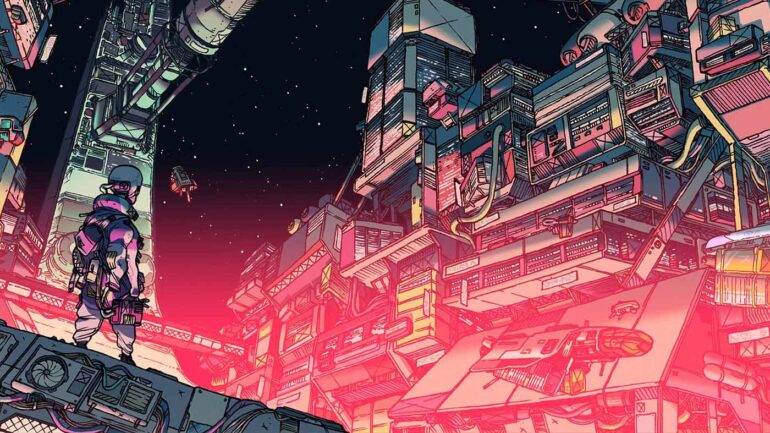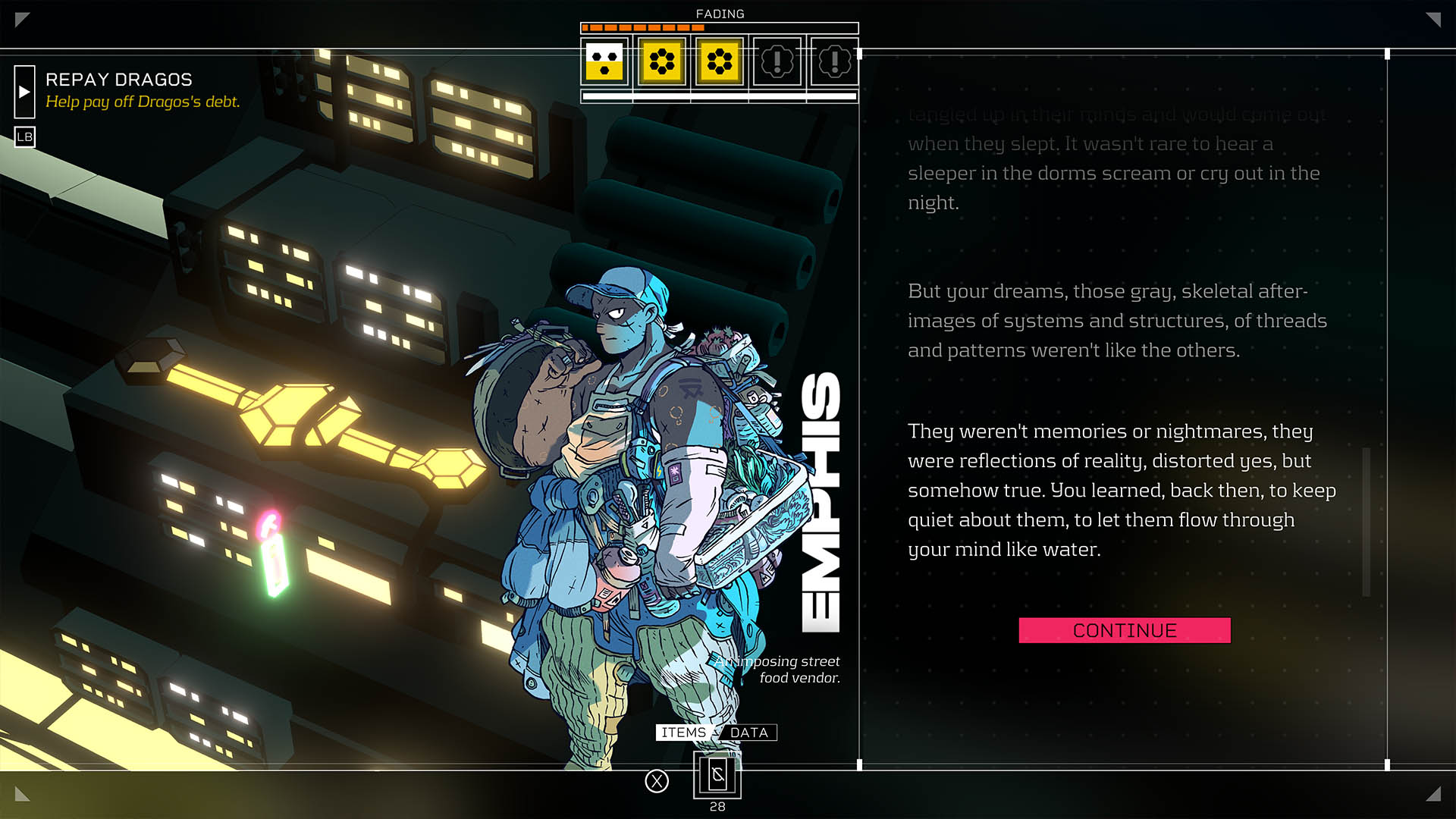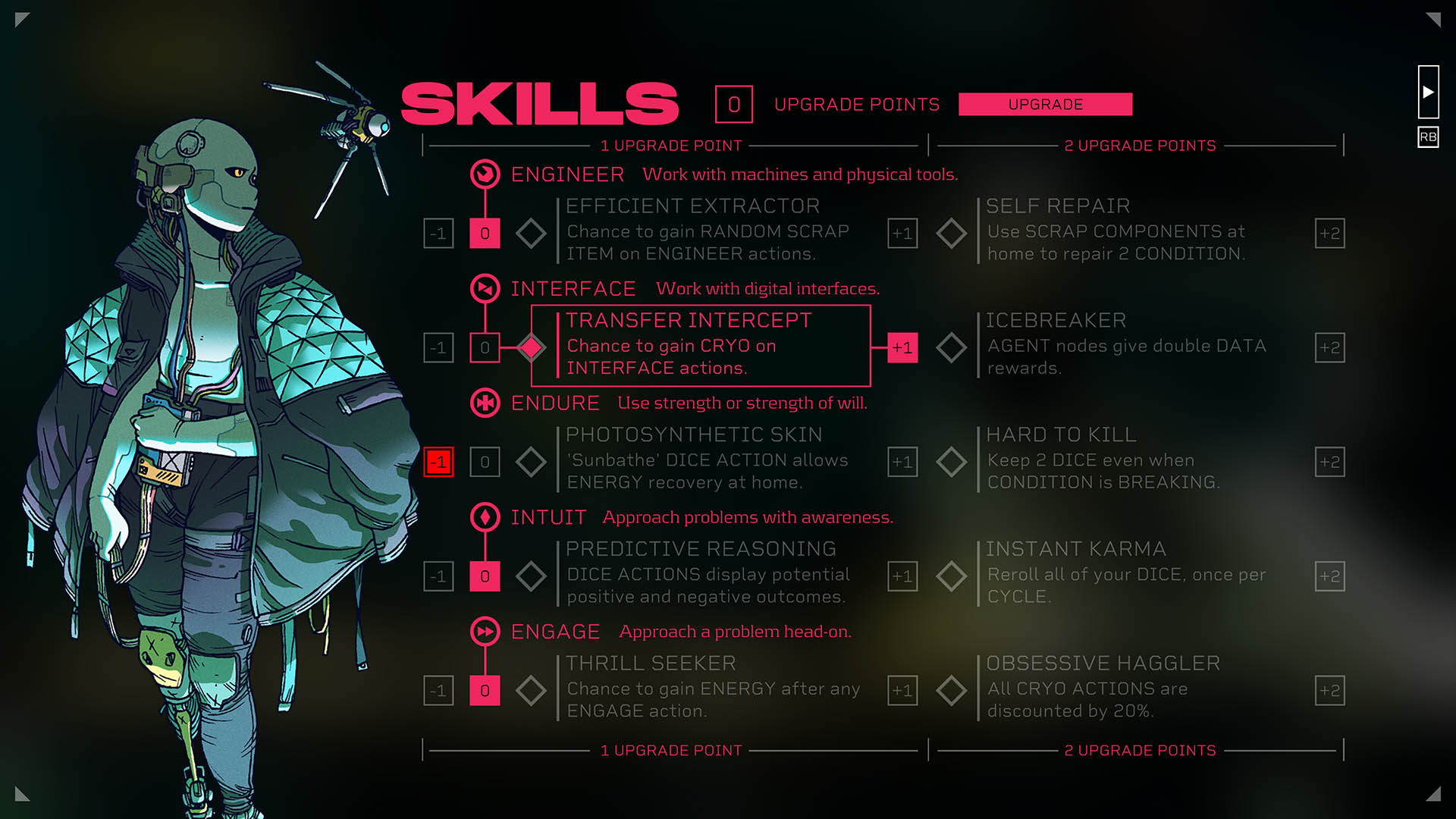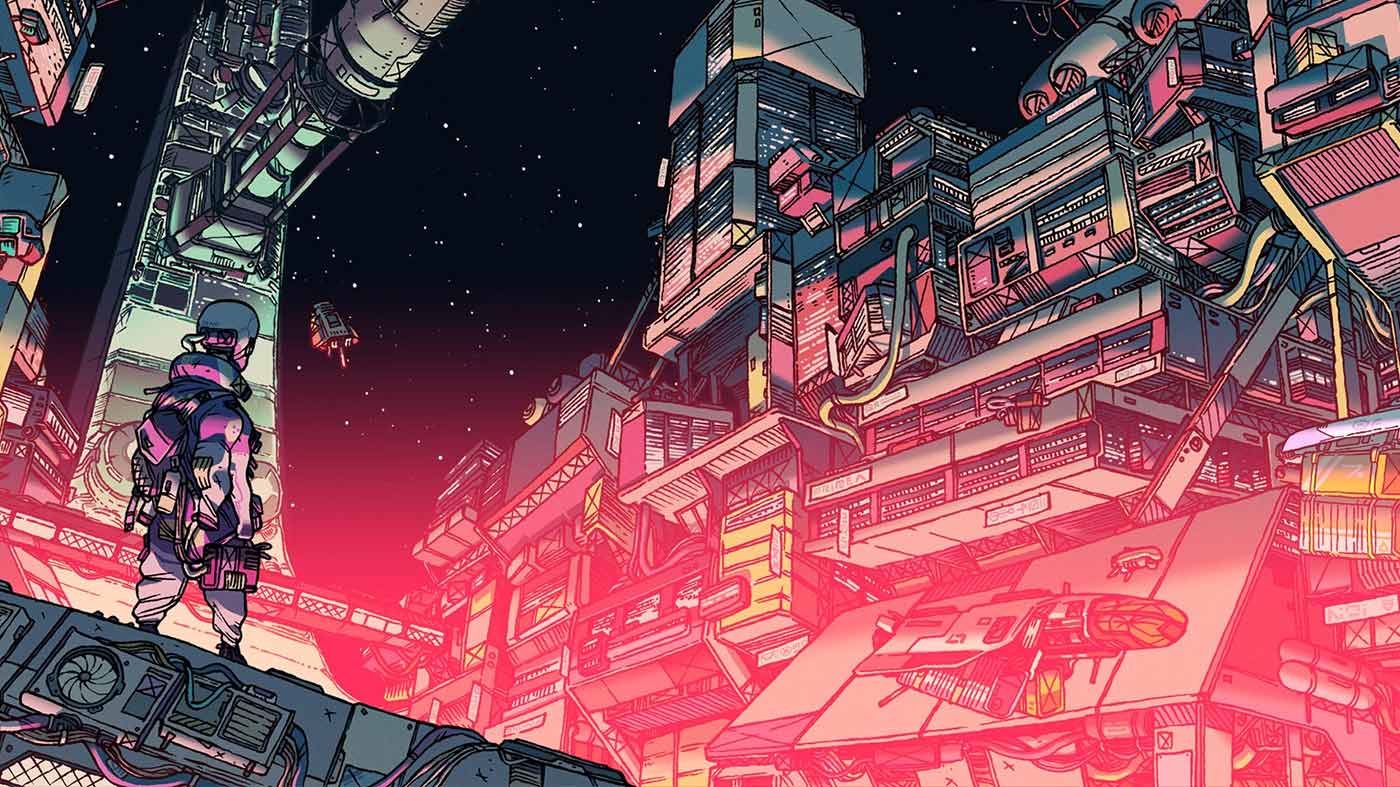Citizen Sleeper was, and still remains, one of my favourite releases of last year. It had one glaring problem though, at least on a personal level – it wasn’t available on PlayStation. My patience in waiting for all three of its free DLC episodes to launch before diving back into the game has paid off though, with the release of the final episode, Purge, coinciding with the game’s debut on PS5 and PS4.
I’m going to abstain from re-explaining what Citizen Sleeper is – you can read my full review of the game’s original release right underneath this write-up – and speak strictly to the new stuff, namely the PlayStation release and the full run of story DLC.
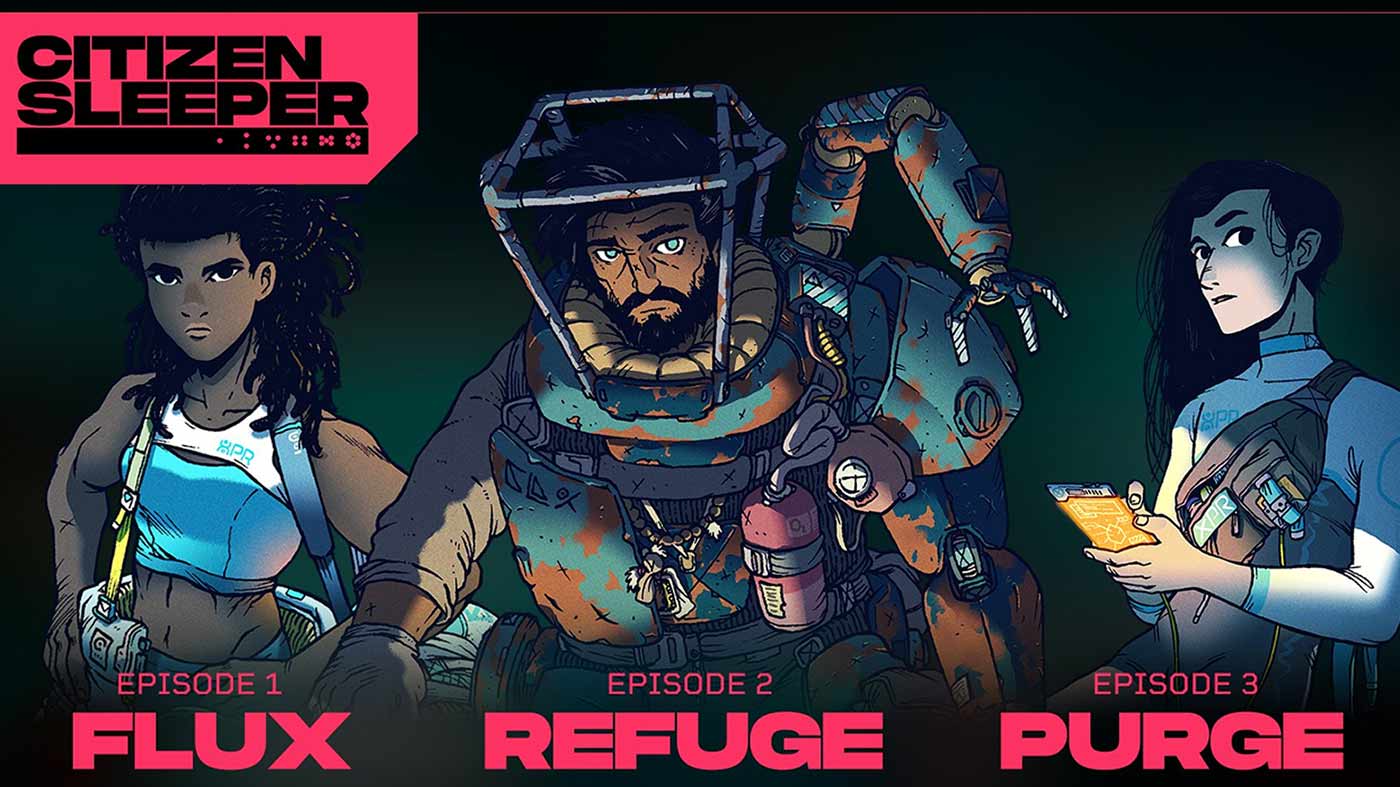
The long and short of it all is this; If you’re a PlayStation player and haven’t played Citizen Sleeper yet, please do. It’s an intoxicating mix of sci-fi flavoured capitalism critique aboard a diverse and characterful space station, tabletop mechanics, time management and branching narrative that’s deceptively simple with a powerful mechanical underbelly. There’s not much to say about the game’s port to PS5 and PS4 specifically, it’s by and large the same game available on other platforms, but it’s (hopefully) a whole new community of players given the chance to experience this indie masterpiece.
Returning as someone who’d played the game on another platform, I did find Citizen Sleeper a lot less daunting this time around, and felt a lot more confident in my ability to establish myself on the Eye and game its systems to pull myself out of poverty. I’m not sure that’s the right angle of attack for this game, but I kind of appreciated it.
The other side of the coin here, of course, is the availability of the three episodes making up Citizen Sleeper’s DLC sequence, which sees players navigate a spot of turmoil as a flotilla of interstellar refugees arrives at Erlin’s Eye, the station’s proprietors at Havenage unwilling to take a few thousand new souls into the already-struggling ecosystem. This trio of chapters arrives toward Citizen Sleeper’s “late game” with a simple item exchange requiring some degree of progress acting as a gate to entry, and definitely brought me back down to Earth (heh) when it came to my confidence as a veteran Sleeper.
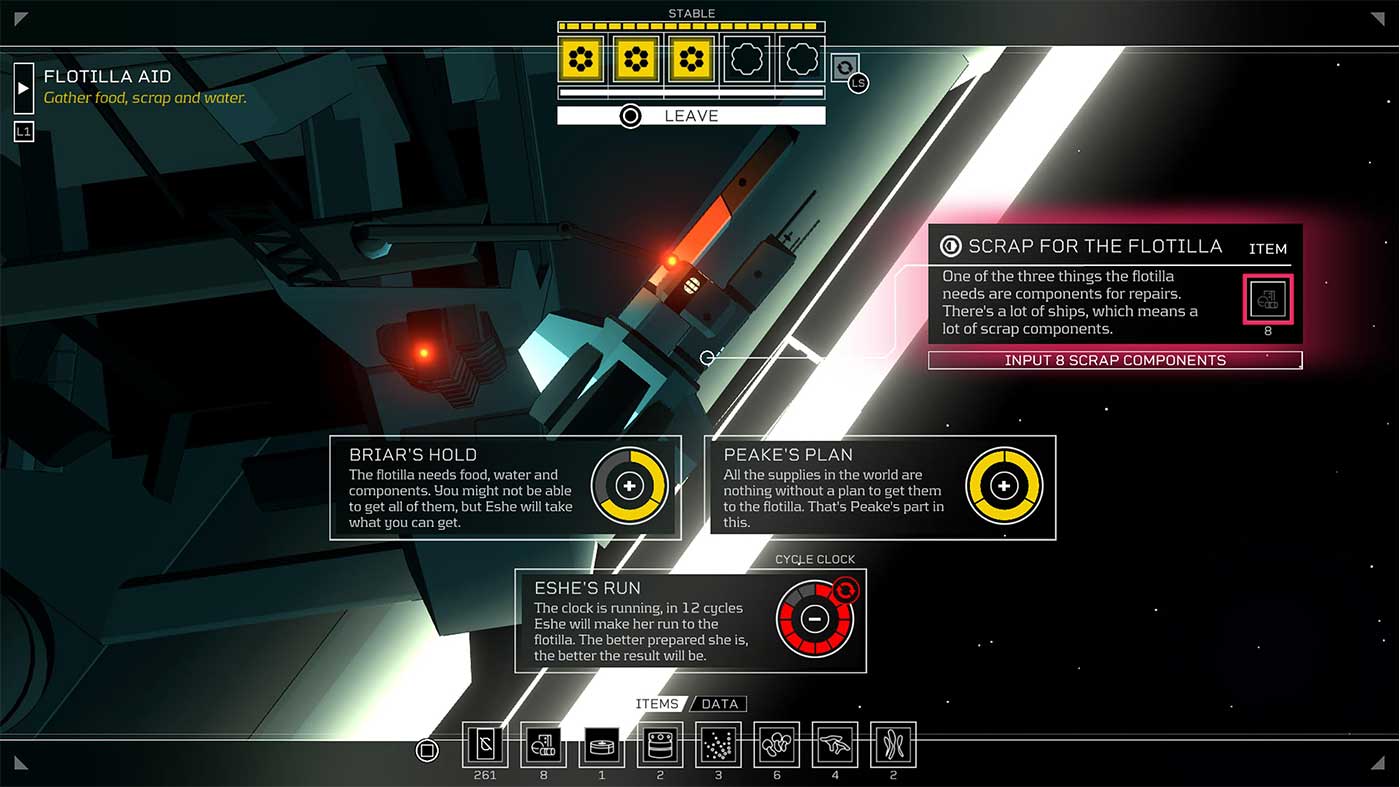
The first episode, titled Flux, introduces players to Eshe and Peake, two new arrivals along with the refugee ships that act as a catalyst of sorts for the player, as the titular Sleeper, to understand that the plights of these people mirror much of your own. It’s an interesting shift in perspective after having worked and scraped and sacrificed everything to make a place for yourself on the Eye, only for thousands more to arrive looking to you to help them do the same. This 1-2 hour first chapter is a stressful one too, giving players a tight window of time to achieve quite a few tasks to make sneaking the refugee ships through quarantine and onto the Eye possible.
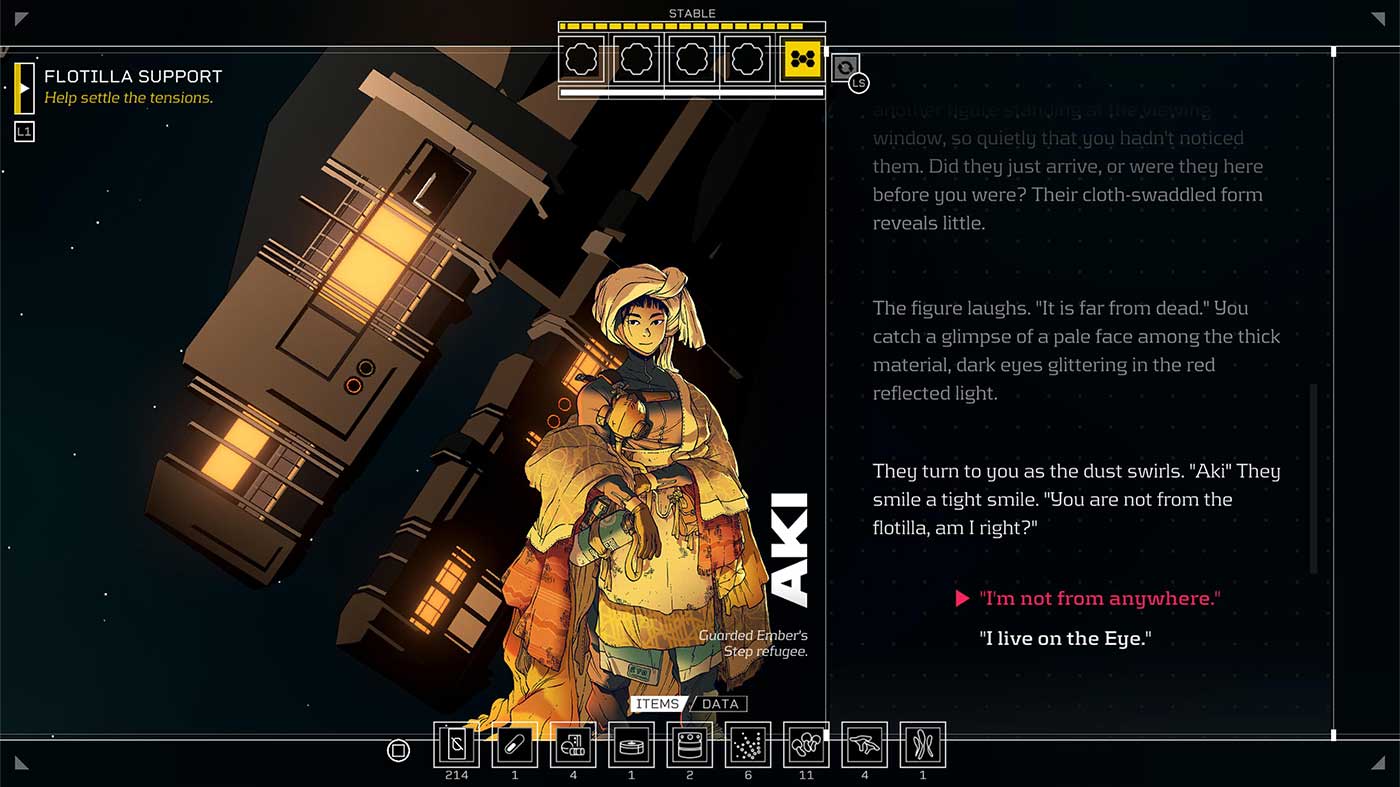
The next episode, Refuge, turns the attention to the flotilla itself and the three subgroups of people aboard its ships. Hailing from three different moons of a larger, inhabited planet, these groups have come from a three-way political tension to wind up displaced in unison. Thus, most of this episode focuses on getting to know each of the groups’ leaders and the individual needs of their crews to establish some degree of understanding. It’s a far more relaxed and text-heavy chapter, with plenty of new and well-written characters to get to know.
The final of these DLC episodes, Purge, is a special one and it’d be remiss of me to spoil just about any of it, suffice to say the tension and time critical panic of Flux returns here, and culminates in a hell of an ending, using all of the groundwork and character building established in the previous two episodes to great effect and tying up a bundle of threads from the base game in the process. I came away feeling the best I’ve felt about any of Citizen Sleeper’s prior possible resolutions, and I would absolutely urge anyone that’s played the main story portion to come back and play through all three new episodes.
Read my full review of the game’s original release below:
It was right around the point that I made the choice to go foraging for rare mushrooms over helping a stranded father and daughter get their one shot at a fresh start, that I realised Citizen Sleeper had made an arsehole out of me. I don’t know what it is about tabletop or tabletop-like games that does it, perhaps it’s the combination of high stakes and low odds that triggers a certain response, but I wind up looking out for me and myself alone. The dozens of names and faces aboard the doomed company-town-on-a-space-station-turned-intergalactic-refuge, Erlin’s Eye, became little more than stepping stones on my path to freedom but now that I’m on the outside I can’t say I care to look back in.
How did we get here, though? That’s the blank chapter in Citizen Sleeper’s slice-of-life narrative that you’ll be filling in. This bold new title from In Other Waters developer Jump Over The Age (Gareth Damien Martin) casts you as a ‘Sleeper’, a digital copy of a human consciousness in an artificial body, that has escaped the clutches of corporate ownership and found themselves aboard the Eye without so much as a plan to hang onto life let alone start a new one. Thanks to a built-in planned obsolescence, time is ticking before your physical form falls apart and so every moment and every decision counts as you explore the station, make allies and enemies and do what you must to survive, thrive or leave alive.
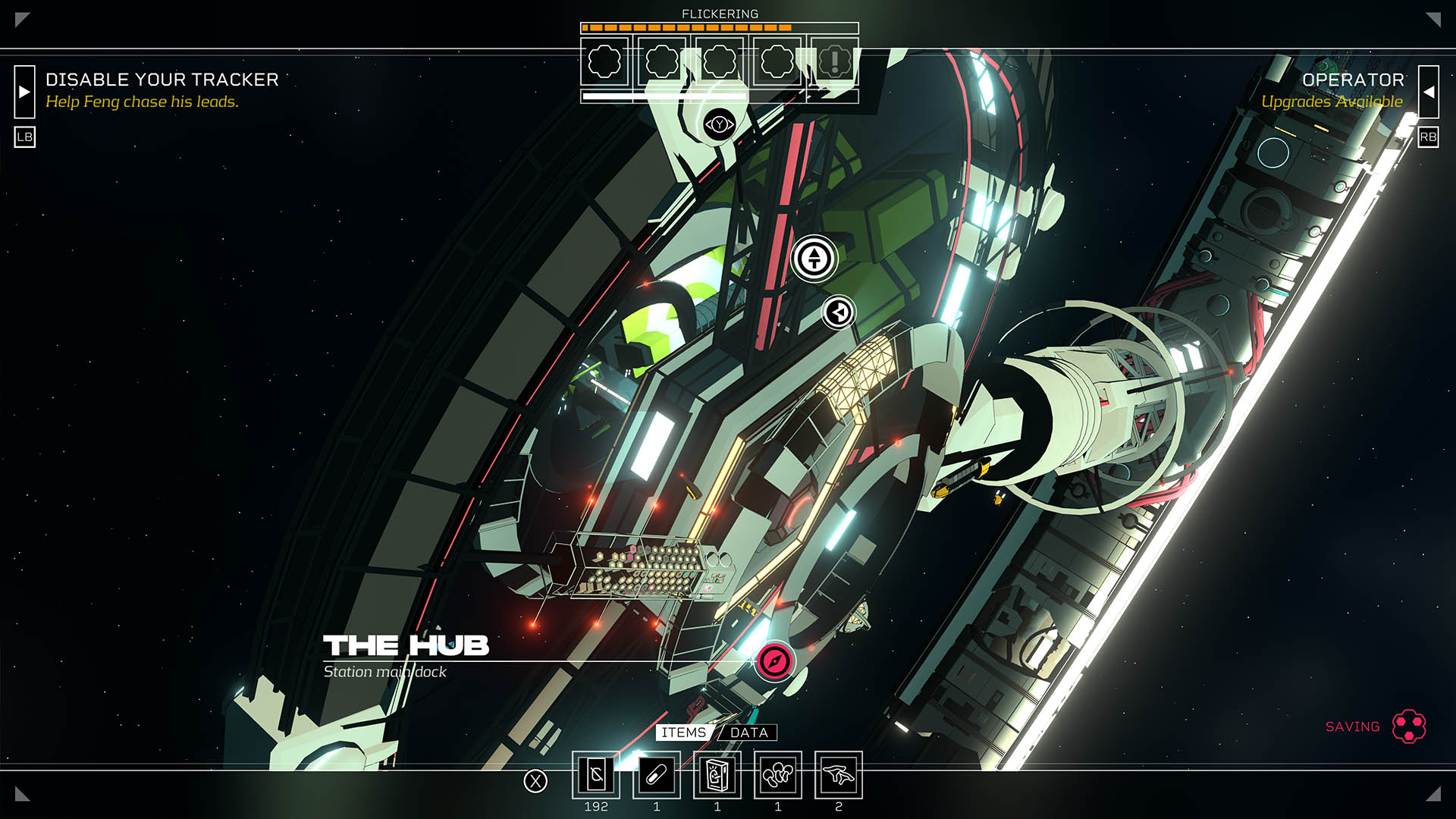
To say I fell in love with the world this game presents would be an understatement – I’m obsessed. Here’s a genuine sci-fi adventure game packed with intrigue, drama and challenge, but one that eschews putting a stick in your hand in favour of putting the world in your mind. Or is it your mind in the world? Citizen Sleeper tackles the heady subject matter of the coalescence of biological and synthetic life and the blurring of the lines between nature and data. Then it imagines how we might fuck even that up in the name of greed, putting your synthetic arse to work for scraps in the shell of a corporate space station like the data-digging equivalent of a hard-rock miner in a company town.
All of this is put together through the lens of a tabletop RPG, the world around you barely more than a top-down map of Erlin’s Eye adorned with icons representing places, people and tasks. The game plays out in Cycles that represent the passage of time – within a Cycle, you’re able to explore the Eye and take various actions, most of which require a roll of a dice to perform and determine their level of success. The number of dice you have at your disposal each Cycle depends on the current condition of your physical form, which degrades as your progress time and also as a result of work done. You’ll be able to take measures to ensure your energy levels stay high and your condition gets better before it gets worse, but it’s a careful balancing act between keeping yourself alive and using your time constructively.
The actions you’ll take aboard the Eye, things like undertaking work in a scrapyard, extracting data from terminals or navigating tricky social interactions, are all means to fulfil your Drives. Drives are your goals, they unlock as you meet new people and uncover new mysteries and they’re what will eventually see your story through to some kind of conclusion. Some can be treated with a certain degree of leisure, but others are at the mercy of Clocks – meters that count up as you perform certain actions or simply as Cycles pass. Between trying to achieve your Drives and manage the various Clocks around Erline’s Eye it almost feels like juggling pins and spinning plates at the same time. The juggling part is fine on its own, but those plates are a constant, looming threat to your ability to keep the pins up in the air. Also some of the plates will cause intergalactic bounty hunters to come and shoot you in the face if they stop spinning.
The result though is a game that hinges on two things – hard choices and bold risks. Not only will you need to gripe with your own time management, forethought and conscience when deciding what to focus your limited efforts on each Cycle, but even once you’ve formulated a plan there’s an element of chance that can completely undo everything. Actions that work on a dice roll can have positive, neutral or negative outcomes that are dictated by both the value of the dice you choose to play for it and your character’s own affinities. At the beginning of the game you’ll be asked to choose one of three classes with their own stats and unique buffs that can then be augmented with upgrade points earned from completing Drives.
The way that all of these different systems interweave and feed into the vast many narrative possibilities is an incredibly slick feat of design, especially once you get over the initial sense of being overwhelmed by them and start to understand how to focus on the outcomes you genuinely want to see. After that it’s just a matter of praying things work out – if you’re anything like me trying to leverage my Interface skill to score a job on a colony ship as a Junior Tech you’ll learn that part the hard way. It can all be quite stressful initially, but also just forgiving enough in the early hours that your failings feel more like new forks on your road to success than genuine disasters.
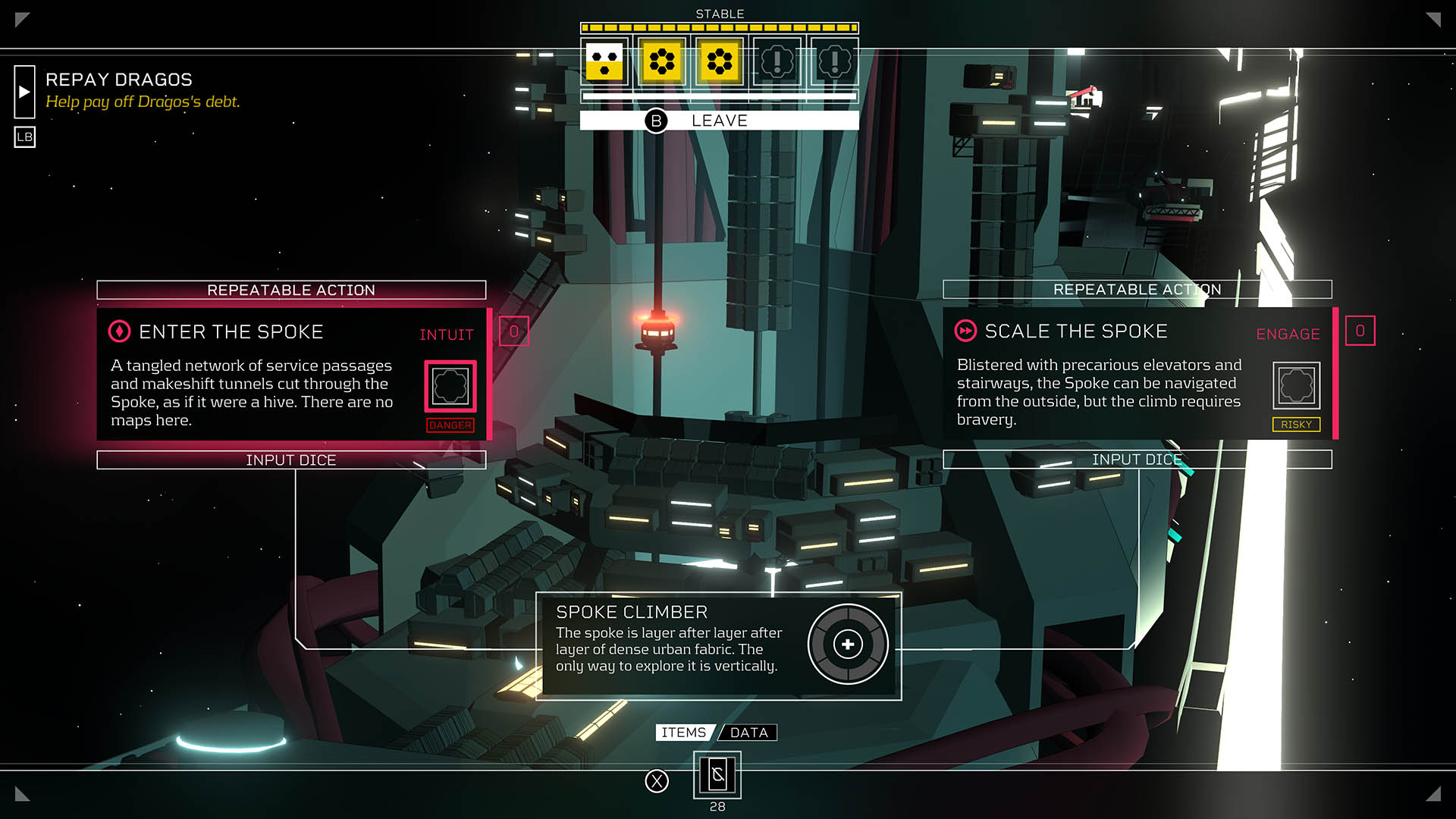
Citizen Sleeper is also a game that feels genuinely replayable. It can easily be finished in around five hours or less if you can stomach leaving friends, enemies and answers behind for a quick getaway. Or you can push yourself, play the long game, explore deeper and deeper into the Eye and seek out everything the game has to offer. Luckily, finishing the game creates a return point right beforehand so you can easily go back and forge an alternate path ahead should you want to, but it’s just as rewarding to start completely fresh and see how differently it can all go.
Life aboard Erlin’s Eye is presented with a clean and stylish aesthetic that works far harder than its combination of mostly static environments and text-based narrative would imply. For starters, the character portraits from acclaimed comic book artist Guillaume Singelin that accompany story beats are gorgeous and add incredible dimension to the game’s already-fantastic writing. When it kicks in, the game’s soundtrack from returning composer Amos Roddy swings deftly between ‘illicit underground fetish club in the year 2090’ and ‘metaphysical contemplations on a Korg MS20’ and it honestly slaps fucking ass. For a game where the most important bits are delivered mostly in text and numbers, Citizen Sleeper is an absolute vibe


